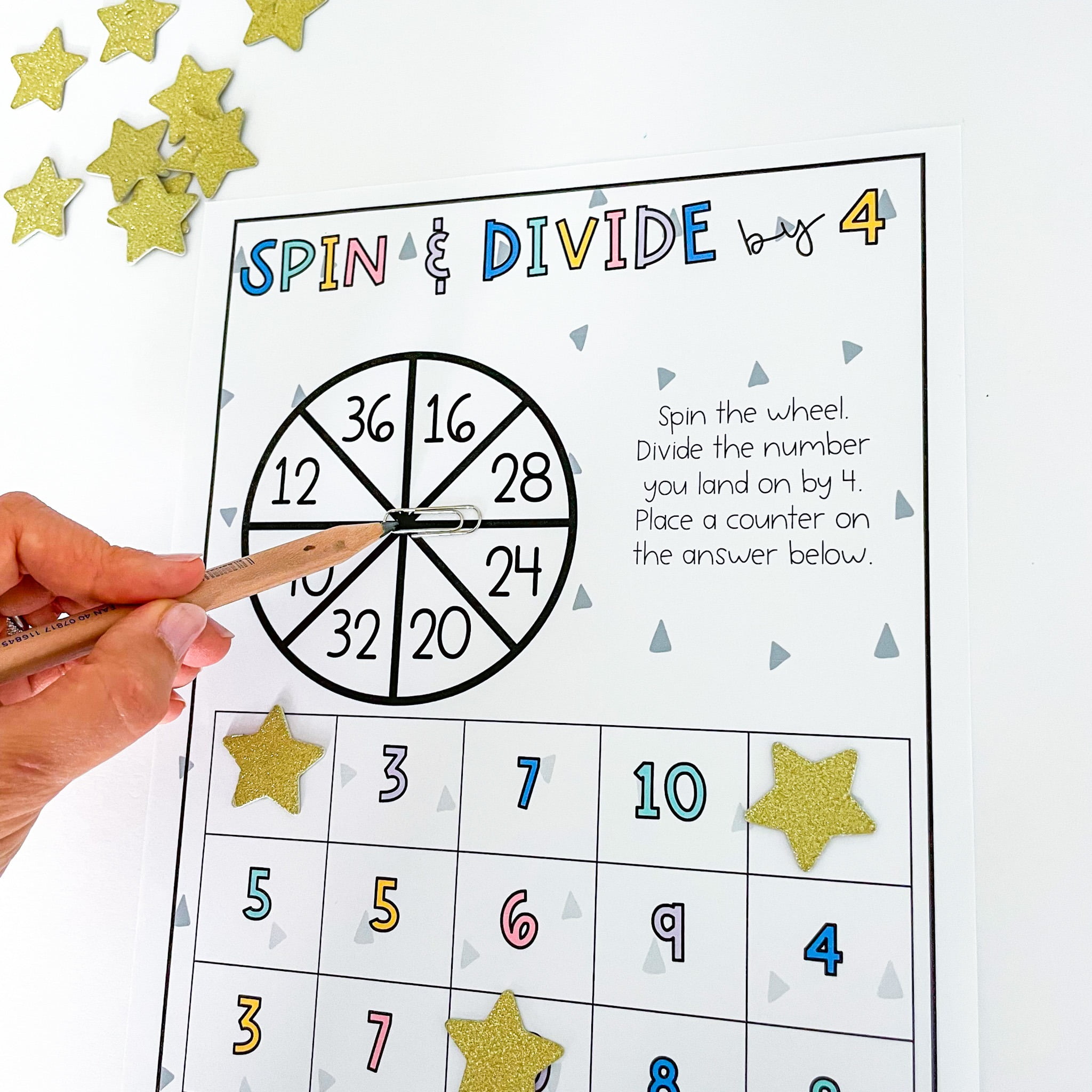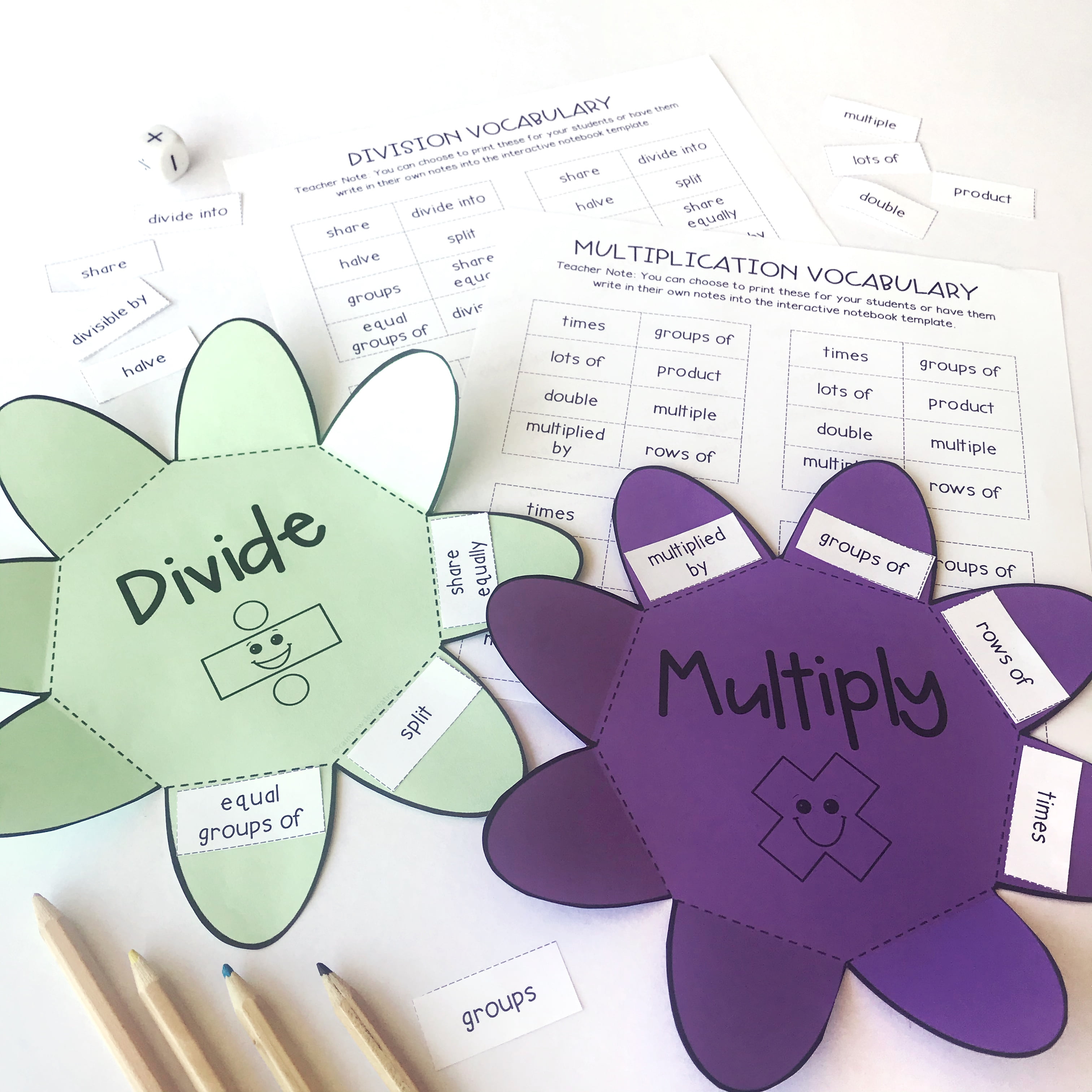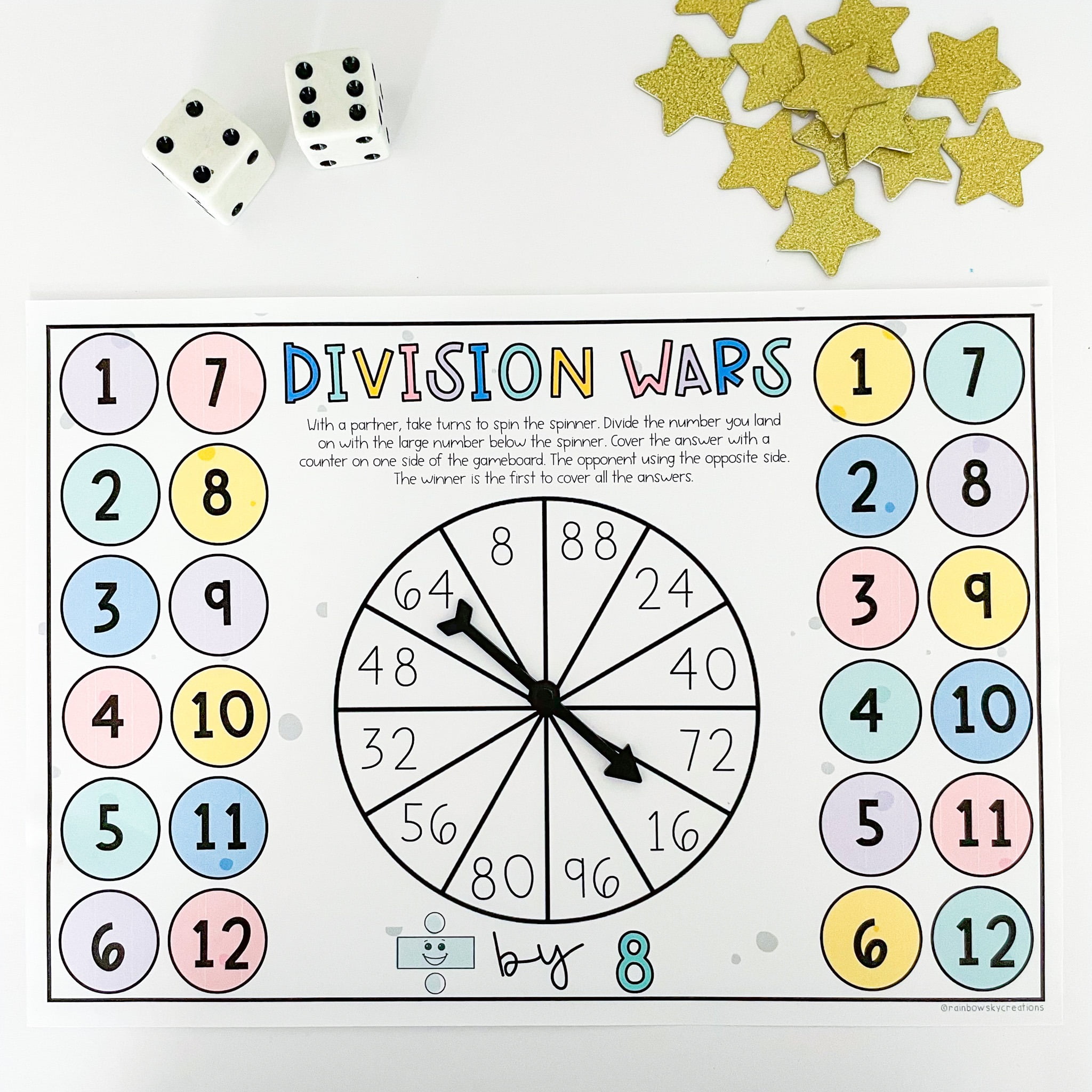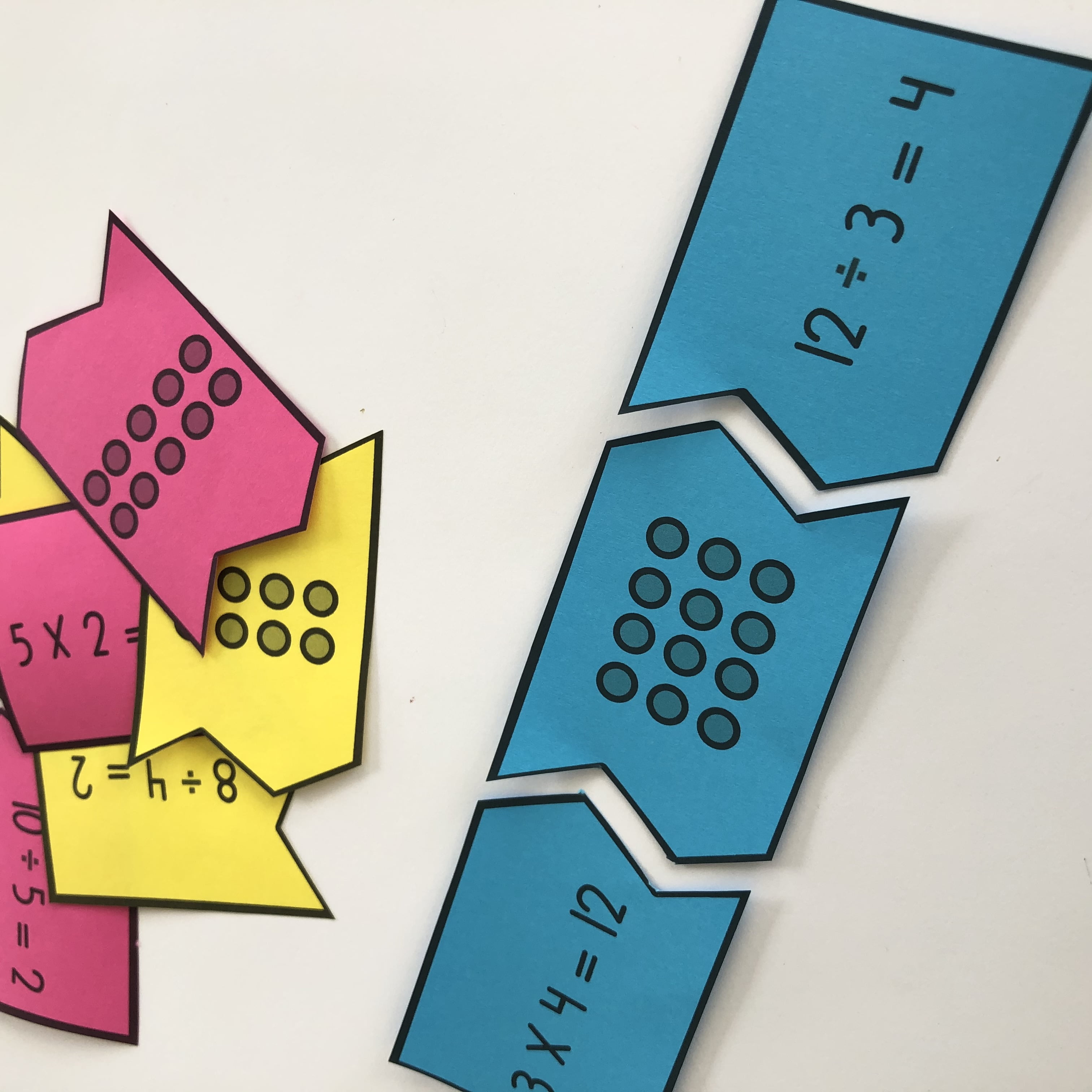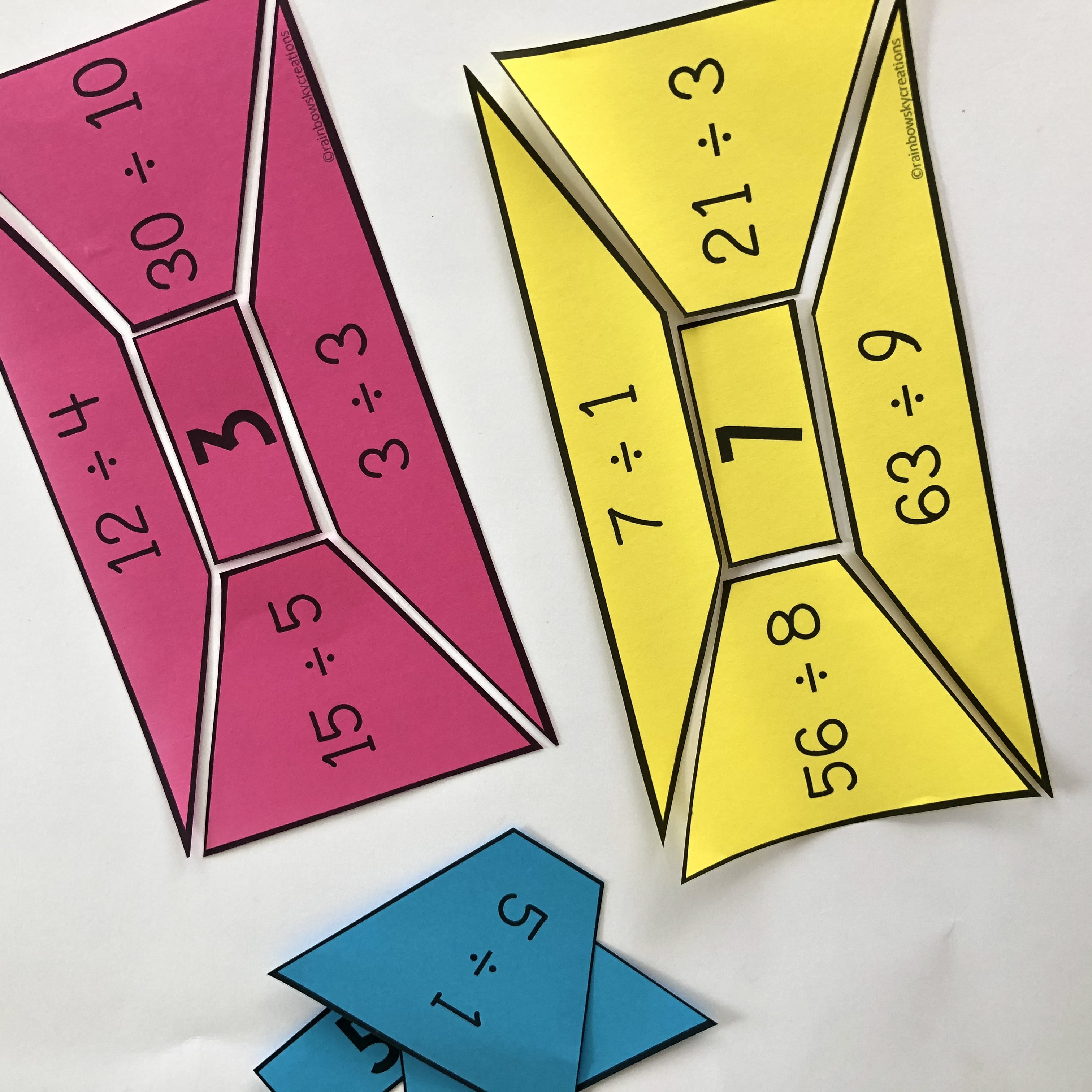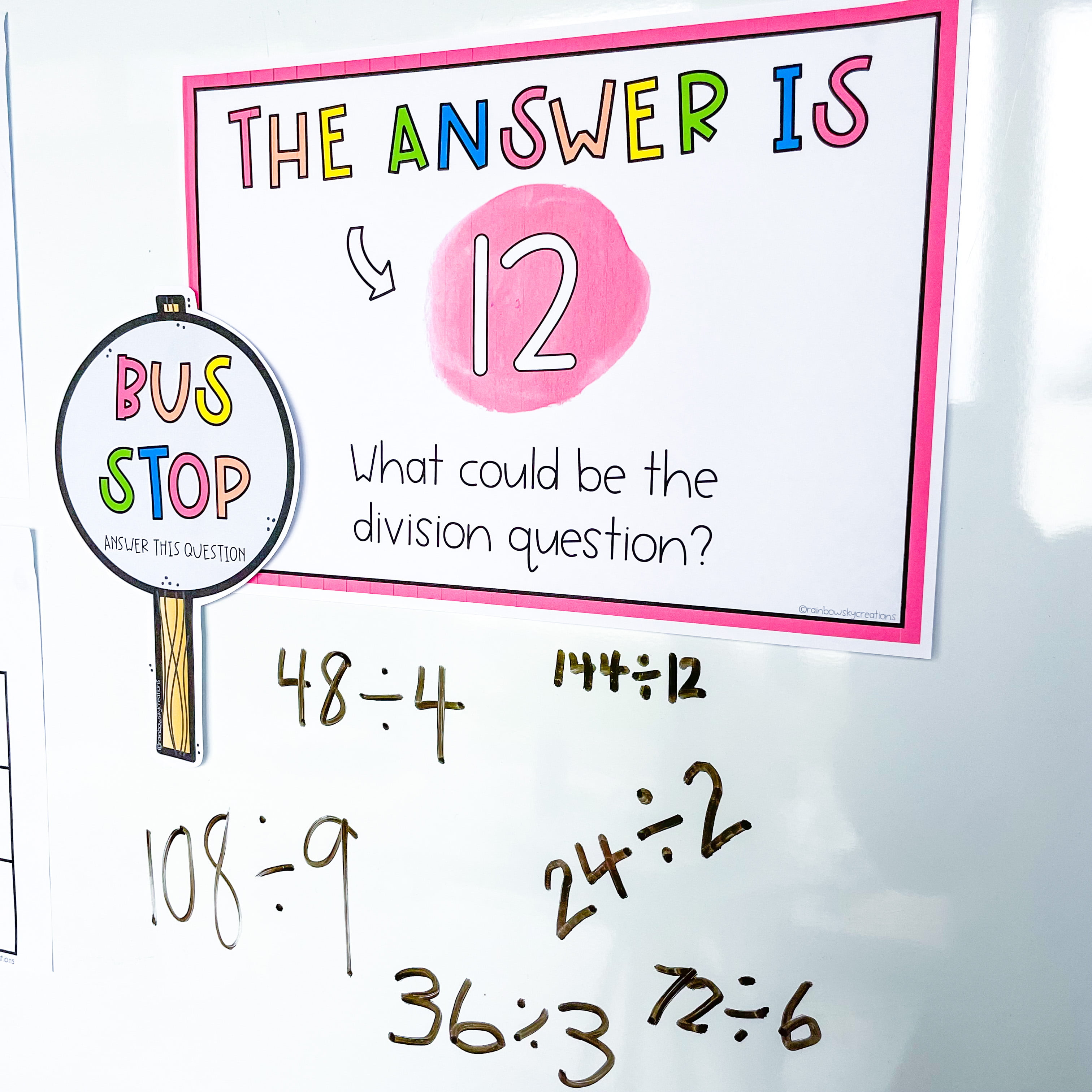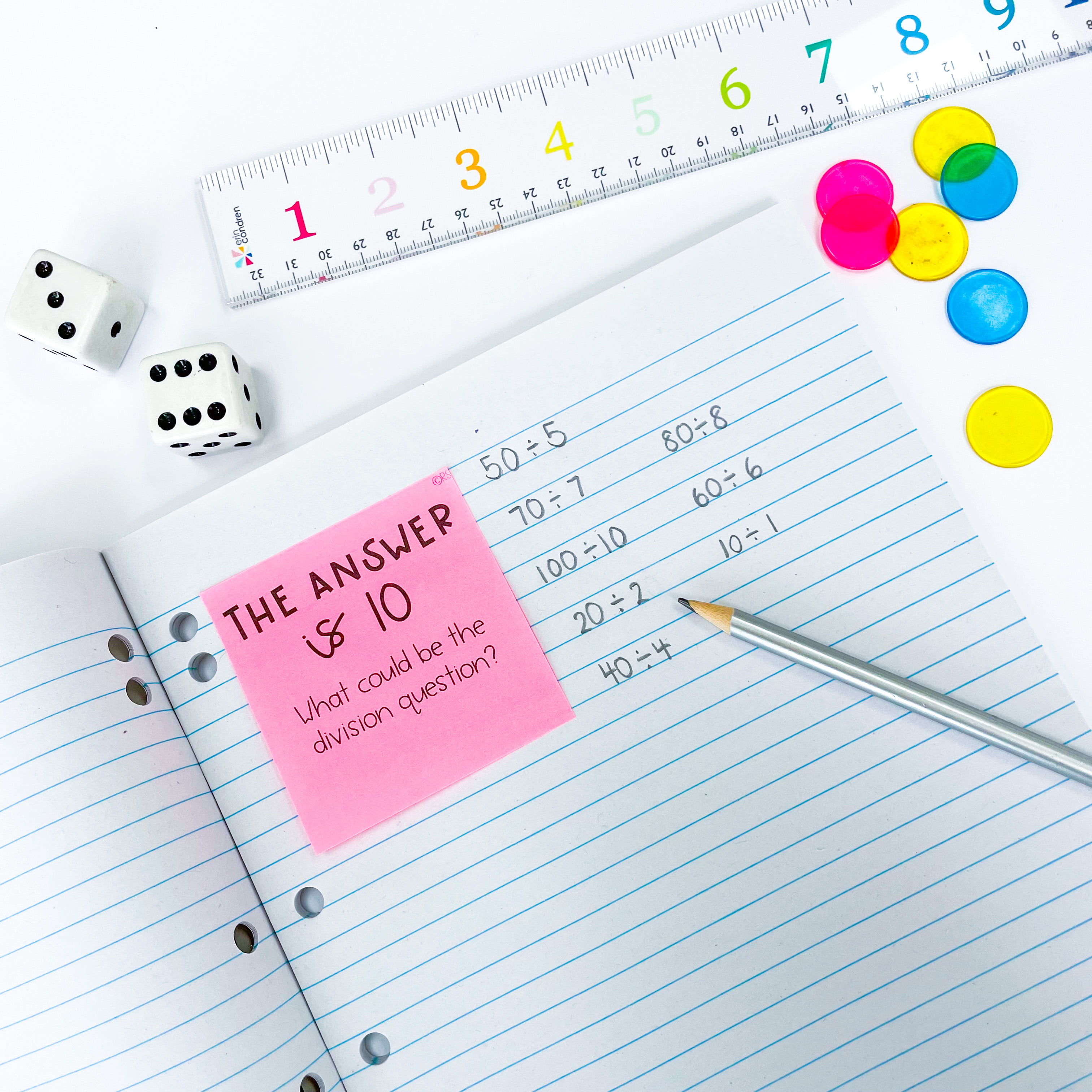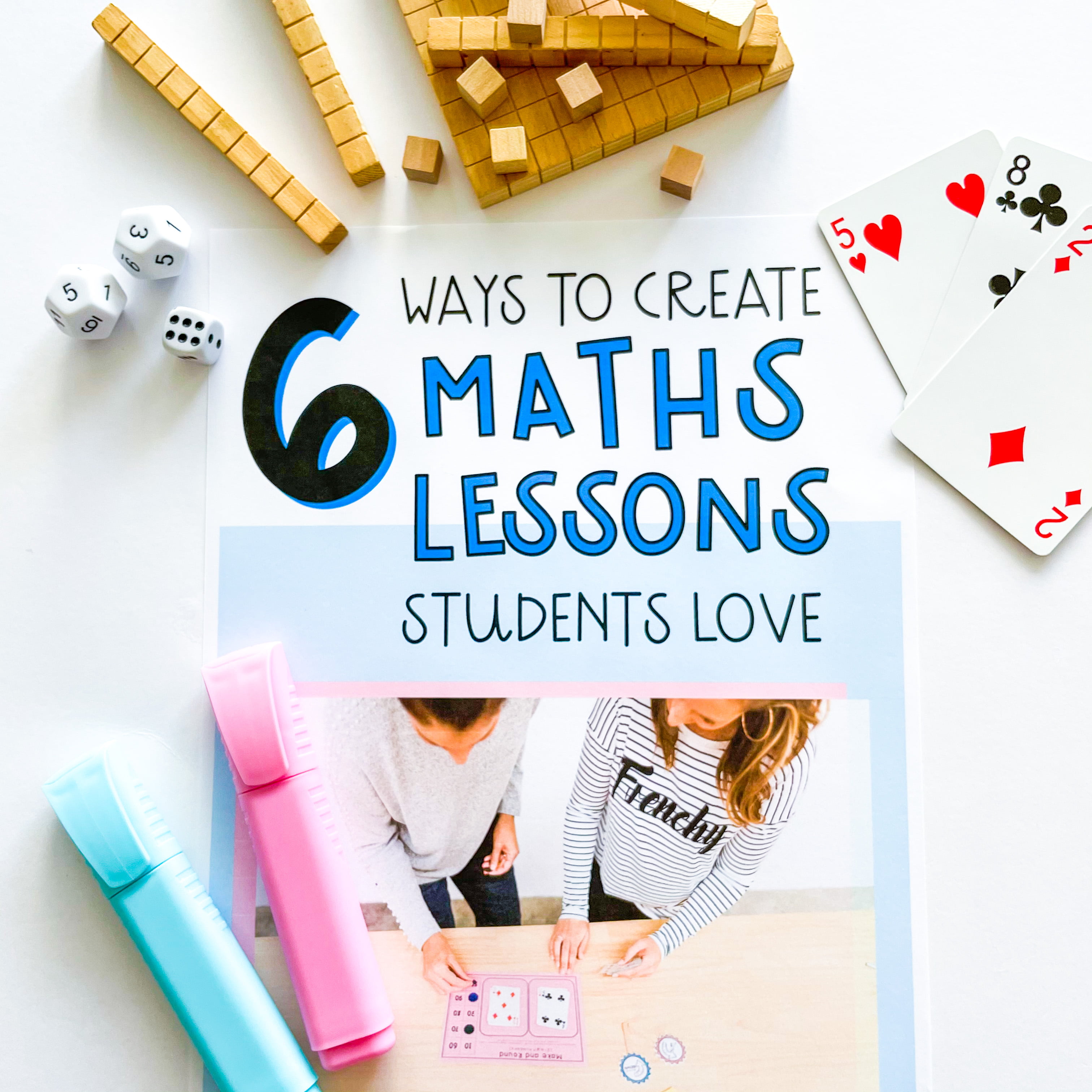Let’s talk about division.
This can be quite a tricky skill for kids, and rightly so. But as teachers, we need to help make the concept easier for them to understand. One way to do that is to inject some FUN!
How can I make division fun?, you may be asking yourself.
We have put together some of our winning lesson ideas taught over the years to help you when teaching division. These ideas have been tried and tested with our own Grade 3 and 4 classes and are activities the students really enjoyed. Make sure you stick around to the end because we have an awesome freebie to share!
So let’s dive into some great ideas to spice up your division lessons…
1. Games
Games are great fun, and they don’t always need to be complicated. As teachers, we are usually very quick to turn to games for multiplication fluency. Division games can be fun and super effective in developing fluency because they involve repeated practice.
We love to use spinner games because different students can be working on other division facts all at the same time. It makes for super easy differentiation, it is hands-on, and students can play alone or in pairs.
Teacher Tip: we like to send these games home when we are finished with them in the classroom with students who still need some help. It is a lot more fun playing a game at home than writing and reciting division facts repeatedly.
Grab our ready to print division games here.
2. Get crafty
This might seem like a weird suggestion for middle primary math skills. But kids remember key ideas when we make lessons memorable for them. They are more likely to connect with the content when the learning experiences are hands-on (this suggestion is a double whammy).
Ask students to make division wheels from paper plates that they can use as a future tool or resource. When we allow students to take control of the resource construction, they are more likely to remember the information.
Again, students can create division wheels for whatever facts they are up to, making for easy peasy differentiation. Your kinesthetic learners are going to love this lesson!
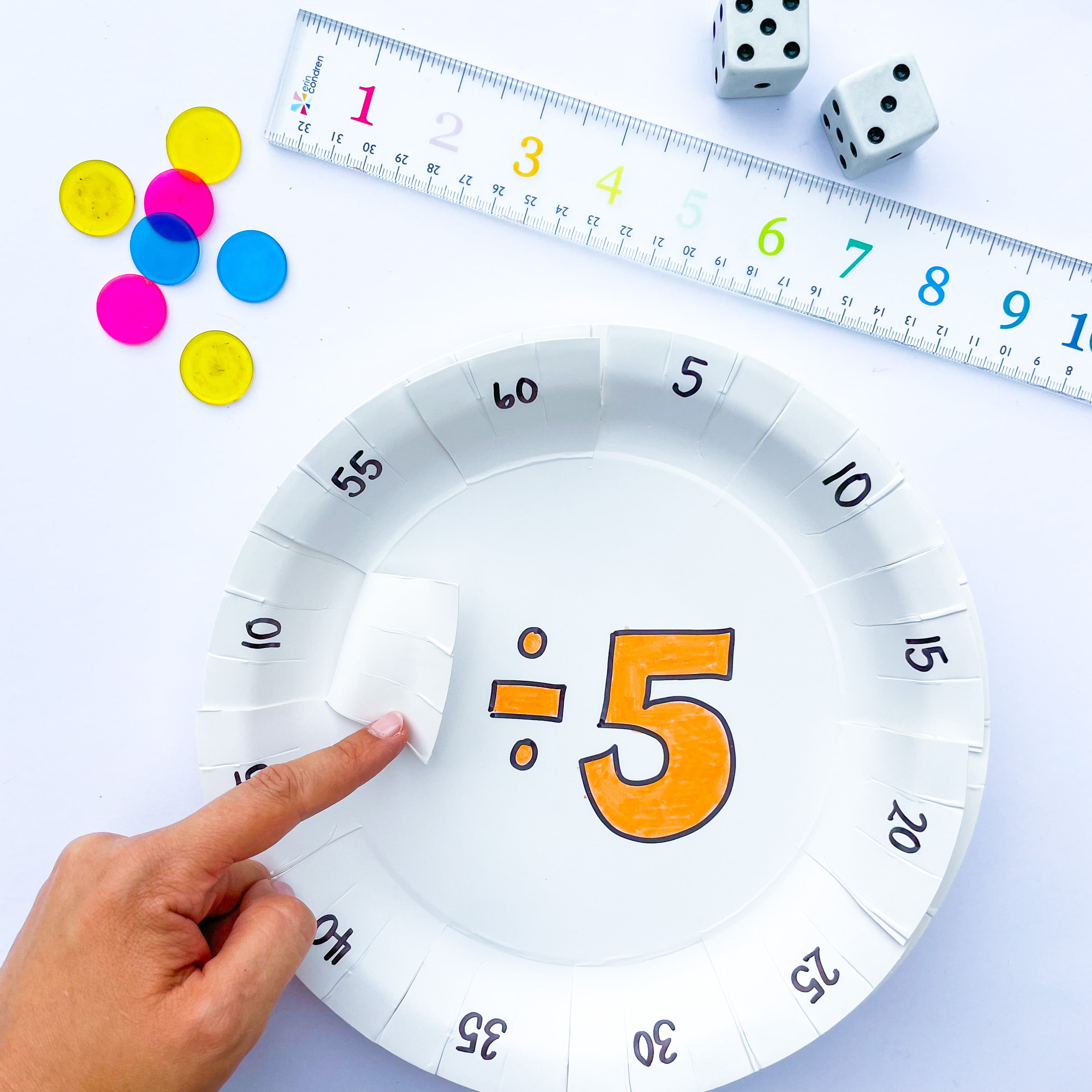
Watch a reel on how we made these here.
3. The golden inverse rule
It is essential for students to know and understand that division is the inverse operation of multiplication. Therefore we must teach these skills together so students can apply their knowledge.
By doing this, we are helping them use less brain power by showing and modelling how one piece of information can help us with another area of mathematics. We have seen many ‘aha moments’ in our classroom when we have implemented this strategy in our classrooms.
Teacher tip: You can do the same thing with counting. Just as you link skip counting with times tables, you can link it to division also.
Find a blog post about teaching skip counting here.
4. Partner up
Working with peers is a great way to consolidate understanding, encourage peer mentoring and develop fluency. Games that can be played in pairs are so much fun as well.
It is always important that we mix up how students work with each other and what they do so all learning styles are considered. The social and interpersonal learners in our classrooms will love working with a partner on solving problems or playing a game.
5. Puzzles
Puzzles can be another way to illustrate the concept of inverse operations.
By doing puzzles, they exercise our brains in different ways to the ideas we mentioned above. In the activity below, students need to find division equations that all match the same answer.
“These are so fantastic to use in small groups or partner centres! Easy to set up and use, while so much fun!” Katie
6. Integrate into warmups
Revisiting tricky concepts, so your students don’t forget is another way to really build fluency and confidence in division. We love to use ‘The Answer is’ as an open-ended warm-up (grab a free copy here). The best part is that this game can be played repeatedly with different numbers, as an informal assessment, and gets students thinking!
E.g. the answer is 12. What could be the division question?
STOP!
Before you read on, make sure you grab your FREE copy of our ‘The Answer is’ division resource. It comes with the bus stop posters, like in the image above, exit tickets and printable sticky notes for students to put in their notebooks.
There are plenty of ways to get your students fluent when it comes to division facts, and once they do, so many more areas in mathematics will become easier for them.
Let us know if you try out any of these ideas, and if you post on social media, don’t forget to tag us @rainbowskycreations.
if you loved these tips and want to learn more about creating engaging maths lessons your students will love? Click here to grab our FREE guide.
What to read next:
8 Times Table Fluency activities
The secret to running successful maths groups
